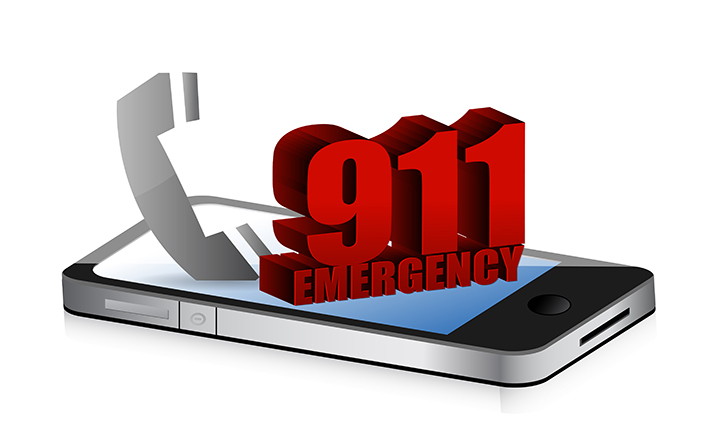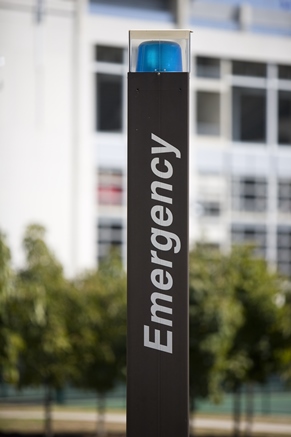
Moving Beyond the Blue Light: Smartphones Improve Facility Safety
While blue lights were previously designed to make people feel safer, the reality is that smartphones are taking safety to the next level by providing better and quicker access to emergency support.
- By Christopher Britton
- Jan 28, 2014

During an emergency situation, receiving timely and firsthand information dramatically helps first responders and other emergency personnel in providing quick, appropriate responses to the right people. While blue light emergency phones have been a mainstay for universities, hospitals and other large institutions for decades, campus administration is now facing the challenges of updating these often-costly systems to keep pace with maintaining their respective communities’ safety.
Fortunately for many institutions, the solution is already on campus in the form of smartphones. The widespread adoption of smartphones has created an opportunity for institutions to broaden access and ease of reporting incidents the moment they happen. Today, a large campus can expand beyond hundreds of blue light emergency phones located only in certain areas to utilizing tens of thousands of smartphones to further extend reporting in the event of an emergency incident or crisis.
History of Blue Light Emergency Phones
The initial premise of the blue light emergency phone system was to provide a way for college campuses to offer equal availability and access to their residents and visitors during emergency situations. The blue lights provided both location details of individuals making distress calls and the ability to connect directly to the appropriate emergency response authority. Implemented in the 1970s, blue lights were developed at a time when mobile phone technology didn’t exist and pay phones were a poor, sporadic solution for individuals needing access to help in an emergency. Over time, administrators felt pressure from insurance carriers, government, parents and the community to install more blue lights across campuses as populations grew in order to adequately scale for density and cover remote areas.

The key challenge for these same institutions is that blue light systems are expensive. Often amounting to several thousands of dollars per blue light installed and then thousands more for ongoing maintenance and telecom fees, many large institutions incur hundreds of thousands of dollars in costs by installing hundreds of blue light phones across their campuses.
Advent and Adoption of Smartphones
As the adoption of smartphones has dramatically grown over the last decade with most people keeping their phones within three feet at all times, many institutions are now implementing overall mobile emergency guidelines and procedures that push critical information out to their institutions’ comprehensive populations so they are properly prepared in the event of a crisis. As part of the mobile program, these same solutions offer an opportunity for institutions to broaden access and increase ease of reporting during incidents.
The smartphone emergency management technology gives institutions the ability to accommodate functional and accessibility requirements of widespread emergency communications and the ability for intelligent routing during distress calls while reducing the hardware maintenance costs. Ultimately, smartphones create a natural link between an individual in need and the right services at the right time.
Smartphone vs. Blue Light Tipping Point
While most college campuses still include blue lights and the perception still exists that they keep the campus safe during unforeseen incidents, the reality is that blue lights break down and are often too far away to access during an actual emergency. In fact, they often represent a minority percentage of the incidents reported. Today, many college campuses are facing the cost of updating or altogether eliminating these systems.
As the populations of communities grow, they have become more diverse. So accessibility to blue light systems is now a challenge. With mobile technology, the ability to support people with disabilities and language differences has dramatically improved. As an example, mobile technology gives a foreign exchange student the ability to easily report a fire on campus from any location via a smartphone in their preferred language. Or, a person who is hearing impaired can utilize text messaging or email to communicate an issue if a blue light phone’s TTY and other types of adapters either aren’t available or are out of order.
Blue light phones are fairly limited in intelligent routing based on predefined buttons and don’t provide the ability to capture more information in the form of pictures or videos that smartphones offer. First responders and other emergency/safety professionals need access to firsthand information, and blue light solutions limit the amount and types of comprehensive situational details that can be gathered and shared.
Complying with the Clery Act
The formation of the Clery Act––signed into law in 1990––requires all colleges and universities that participate in federal financial aid programs to track and share information about crimes on their campuses. The real challenges for universities that solely rely on blue lights for emergency and safety management are that acts of violence often go unreported and leave the institution liable for lack of compliance reporting. As mobile technology has evolved and formal mobile emergency management solutions become adopted, faculty, staff and students can easily send incident reports via their smartphones directly to the proper channels, ultimately encouraging a higher rate of participation in reporting and giving the institution the ability to develop and maintain a database of incident reports for compliance reporting.
The rise of the smartphone is an important technological advancement that offers campuses, malls, hospitals, and other organizations an economical way to extend beyond basic blue light phone systems through more intelligent routing, better analysis of outcomes and quicker responses from campus police and other local police. And, institutions are able to improve their reporting compliance with the Clery Act. While blue lights were previously designed to make people feel safer, the reality is that smartphones are taking safety to the next level by providing better and quicker access to emergency support.